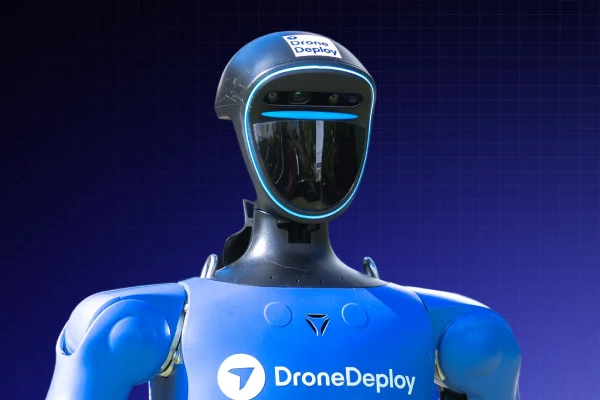Use robots to autonomously scan construction sites

Quick Summary
Tracking progress is critical in the construction industry. You need to ensure that projects are completed on schedule to avoid costly overruns and disappointed clients. And that requires visibility at every stage of the job.
But tracking the progress of construction projects is also notoriously difficult. It’s hard for human workers to scan entire buildings consistently and keep an accurate record of changes against the BIM (Building Information Modeling) - especially if this is required on a daily basis. And the larger the project, the more challenging and expensive tracking becomes.
Fortunately, technology is evolving fast. The global market for construction robotics is projected to grow from $22.7 million in 2018 to $226 million by 2025 ¹. The combination of autonomous mobile robots and innovative 3D laser scanners is set to transform the industry.
The convergence of laser and robotics technology
LiDAR scanning, also known as reality capture or high-definition surveying, allows construction professionals to capture 3D digital data of physical environments, providing a detailed record of projects. Laser scanners have been commercially available since the 1990s, but over the last few decades the technology has evolved significantly.
“Laser scanning technology has come a long way,” says Haydn Bradfield, Reality Capture and Construction Sales Manager at Global Survey. “The first scanner in New Zealand - the Cyrax 2500 - only captured 1,000 points per second. Now we have scanners that can capture 2 million points per second.”
Scanners have also evolved in terms of weight and mobility. The Cyrax 2500 consisted of a 29kg system that needed to be mounted in place and manually moved around. But today’s scanners are far smaller and lighter, allowing them to be mounted on top of mobile robots, along with other payloads. Combine this with automated registration and availability of live data, and that’s where things get really exciting.
The benefits of using robots to scan progress
Autonomous mobile robots, like Boston Dynamics’ Spot, are an increasingly powerful asset to the construction industry. With its quadrupedal form, Spot can navigate all kinds of environments, walk on uneven surfaces and even climb stairs. When equipped with laser scanners, Spot becomes a perfect tool for capturing 3D data on construction sites.
By using a robot operations platform like Rocos, users can import a 3D model of their construction site into the platform, and then use live telemetry from Spot to accurately map its position in the digital twin. Or with a mounted laser scanner, the robot can capture data of the site from scratch and render it as a realistic 3D environment. This data can be viewed in real-time and compared with crucial project information like the BIM.
“The combination of new laser scanning technology with the evolution of autonomous mobile robots is a huge development for the construction industry,” says David Inggs, CEO at Rocos. “Instead of humans carrying scanners around manually, robots are capable of capturing everything - significantly improving productivity and reducing labour costs.”
Another key benefit is the consistency that construction robots bring to the tracking progress. While human inspections will always be prone to error, a robot can follow a predefined route and scan the exact same locations from the same angle every time. This means progress can be chartered against a BIM with much greater accuracy and repeatability.
The power of robot autonomy
Through the Rocos platform, Spot can even be programmed to perform missions autonomously. Spot can be scheduled to wake up at a certain time and follow a route of waypoints, scanning and capturing point cloud data, then return to its default position and power down by itself.
“The beauty of these autonomous mobile robots is that they can survey construction sites at any time of the day or night - they can literally capture critical data while your team is sleeping. The potential for time and cost savings is immense,” says David Inggs. “It also saves workers from doing highly repetitive, mundane work - or navigating hazardous environments.”
It’s worth noting that during autonomous missions, robots may occasionally get stuck. If this happens, the Rocos platform can send an alert to a human operator asking them to intervene. The operator can take control from anywhere with the platform’s remote teleoperation capabilities. Ultra low-latency video streaming provides even greater context and control.
The future of robots in construction
“We’re seeing a lot more hardware diversity in robotics and scanning technology - and that’s driving adoption in a wider range of industries. In turn, this sparks creativity and new ideas in construction. The future of our industry is very exciting” says Haydn Bradfield.
The benefits of a single robot performing site surveying are clear - accurate and real-time data, reduced labour costs, improved safety for workers and early identification of delays or problems.
But imagine fleets of robots - in different form factors, performing different tasks - all acting together cohesively across a construction site. A network of interconnected machines relieving humans of backbreaking labour and freeing them up for more strategic, high-value tasks.
It’s a future that may not be far off. “We’re at the dawn of the robotics revolution in construction,” says David Inggs. “What really excites us is what will happen when these tasks are automated at scale, with different robots working autonomously across entire sites. Although we’re a few years off from this reality, we’re optimistic about the direction we’re heading in.”
About
Haydn Bradfield is a Reality Capture and Construction Sales Manager at Global Survey, New Zealand.
David Inggs is the CEO and Co-Founder of Roco
FAQ
Related articles
Ready to manage your data from the very start?
Book a quick call to see how DroneDeploy streamlines capture from construction through building ROI.
.svg)
.png)


